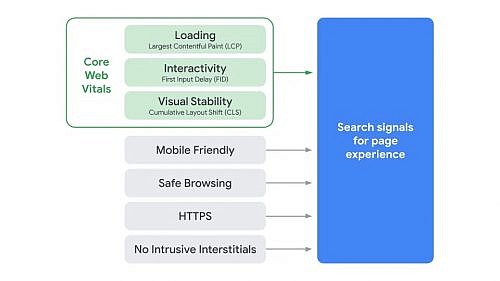Google Search to Introduce New Page Experience Ranking Signal in 2021
Google is preparing to introduce a new ranking signal for Search, based on page experience as measured by Core Web Vitals metrics. This includes factors like page speed, responsiveness, and the stability of content as it loads. The upcoming update will combine these signals with previously announced UX-related signals for mobile-friendliness, safe browsing, HTTPS security, and intrusive interstitials.
Google is also updating its requirements for the Top Stories feature. It will no longer be limited to AMP pages – any content will be eligible:
As part of this update, we’ll also incorporate the page experience metrics into our ranking criteria for the Top Stories feature in Search on mobile, and remove the AMP requirement from Top Stories eligibility. Google continues to support AMP, and will continue to link to AMP pages when available. We’ve also updated our developer tools to help site owners optimize their page experience.
Mobile friendliness, HTTPS, and other UX signals listed in this update have long been included in best practices for WordPress sites. The Core Web Vitals items are a newer area that site owners will want to dig into when preparing for the new page experience signal.

Measuring things like the unexpected layout shift of visible page content and the experience users get when first interacting with a page are not easy. In anticipation of this ranking signal update, Google has updated the Lighthouse and PageSpeed Insights tools to give information and recommendations on a site’s Core Web Vitals. Google Search Console also provides a dedicated report, and developers can also get more information from Chrome DevTools, web.dev’s measure tool, and the Web Vitals Chrome extension. There are also several WordPress plugins that incorporate some of these tools, notably Site Kit by Google and Google Pagespeed Insights.
While this is a major change to ranking, Google noted that it will still prioritize pages with the best information overall. Better page experience scores will help a site rank better among multiple pages with similar content.
Developers who focus on delivering a high quality user experience reacted positively to Google’s announcement, since this means that UX work is getting validated as a valuable aspect of a site’s ranking.
Google plans to put the ranking changes into place sometime in 2021 and will provide at least six months notice before rolling out the update. This will give site owners time to improve their scores on the various page experience metrics. The company also plans to add more page experience signals on a yearly basis.








